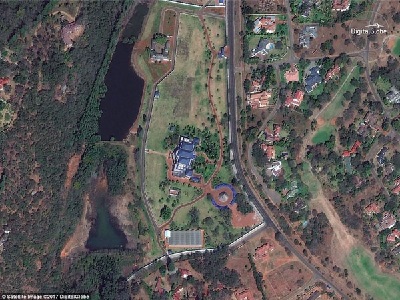- News
- A new angle for Third Party Mi...
A new angle for Third Party Missions data
25 Apr 2018

Recent changes for accessing ESA's Third Party Missions are bringing new benefits to users of Earth observation data worldwide.
Through its Earthnet Programme, ESA has been providing users with access to a number of non-ESA EO missions—so called Third Party Missions (TPM)—for many years, besides supplying them with data from its own Earth observation satellites.
ESA's TPM arrangement, which currently includes over 40 instruments on more than 35 missions, has been operating for over 30 years providing EO data to users in Europe and around the world.
The TPM datasets are distributed under specific agreements with the owners or operators of the mission – some sets are available under the free dataset policy and require only a fast registration, others are part of the restrained data set and require the submission of a project proposal. To find out more, browse the data descriptions.
ESA has recently changed the agreements with the commercial TPM data providers in order to also include start-ups and entrepreneurs in incubators to access the data. This will highly support another ESA programme: ESA's Technology Transfer Programme Office (TTPO).
The TTPO has initiated its Business Incubation Centres (BICs) to work with and inspire entrepreneurs to turn space-connected business ideas into commercial start-up companies. Nineteen ESA BICs have now been established, in most cases located near space and technical research centres, providing easy access to expertise and laboratories.
Today, over 500 new companies have been supported creating thousands of new jobs in Europe. Currently, ESA BICs select and support about 150 more companies yearly.
"A large majority of the companies' business ideas revolve around the use of space data, and EO data is an increasingly important topic", reported Aude de Clercq, technology transfer officer at the TTPO.
"For an entrepreneur, it is a tough challenge to move from an initial idea to actually developing a successful and viable start-up company. The incubation programme aims to provide a nurturing environment where access to key assets is facilitated".

Three start-ups have immediately shown their interest to use TPM data. The first is GMATICS SoCoA, which aims to provide updated information about soil consumption and soil changes at regional to national scale.
The second is TETHYS - an innovative precision-farming tool by the Centrale Valutativa start-up that, using Earth observation data and other (meteorological, agronomic and soil) data, provides farmers and golf course superintendents with an "irrigation advice" on when, how much and where to irrigate, allowing significant water savings.
And finally, Qirate, a Software as a Service (Saas) location intelligence service ideal for holidays or Real Estate businesses, which uses a quality index of neighbourhoods starting from a specific address or geographical coordinate, and provides all the official data with infographics and maps grouped by different categories (shopping, culture, transportation, parks and green areas, etc.) of the area, thus offering best solutions to customers.
Mission Manager of ESA Third Party Missions, Giuseppe Ottavianelli, states, "Providing support to entrepreneurs in accessing TPM data will allow them to consolidate their projects before implementing a full operational and scalable service. It will also provide the opportunity in the early development phase to potentially pivot test various scenarios and gain valuable preliminary customer feedback.
"The implementation of this change will bring beneficial long-term returns. As these start-ups will no longer be in their research and development phase and progressively move into a sustainable commercial one, they would then buy data directly from the data provider to continue the provision of their operational services/products."
"This change shows once again how ESA's Earthnet Programme and its TPMs activity is evolving based on the needs of the Earth observation community, and how it can support other ESA activities such as the Technology Transfer Programme," concluded Ottavianelli.

